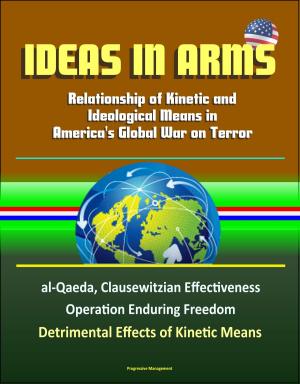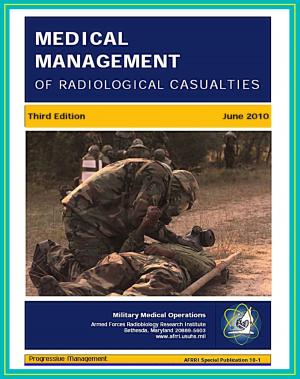FBI Report: National Gang Threat Assessment (NGTA) Emerging Trends - Street Gangs, Drug Cartels, Regional and State Breakdowns, Expansion of Non-Traditional Gangs
Nonfiction, Social & Cultural Studies, Political Science, Politics, Law Enforcement, True Crime| Author: | Progressive Management | ISBN: | 9781301474844 |
| Publisher: | Progressive Management | Publication: | April 29, 2013 |
| Imprint: | Smashwords Edition | Language: | English |
| Author: | Progressive Management |
| ISBN: | 9781301474844 |
| Publisher: | Progressive Management |
| Publication: | April 29, 2013 |
| Imprint: | Smashwords Edition |
| Language: | English |
The National Gang Intelligence Center (NGIC) prepared the 2011 National Gang Threat Assessment (NGTA) to examine emerging gang trends and threats posed by criminal gangs to communities throughout the United States. The 2011 NGTA enhances and builds on the gang-related trends and criminal threats identified in the 2009 assessment. The assessment is based on federal, state, local, and tribal law enforcement and corrections agency intelligence, including information and data provided by the National Drug Intelligence Center (NDIC) and the National Gang Center. Additionally, this assessment is supplemented by information retrieved from open source documents and data collected through April 2011. Gangs continue to commit criminal activity, recruit new members in urban, suburban, and rural regions across the United States, and develop criminal associations that expand their influence over criminal enterprises, particularly street-level drug sales. The most notable trends for 2011 have been the overall increase in gang membership, and the expansion of criminal street gangs' control of street-level drug sales and collaboration with rival gangs and other criminal organizations. Gangs are expanding, evolving and posing an increasing threat to US communities nationwide. Many gangs are sophisticated criminal networks with members who are violent, distribute wholesale quantities of drugs, and develop and maintain close working relationships with members and associates of transnational criminal/drug trafficking organizations. Gangs are becoming more violent while engaging in less typical and lower-risk crime, such as prostitution and white-collar crime. Gangs are more adaptable, organized, sophisticated, and opportunistic, exploiting new and advanced technology as a means to recruit, communicate discretely, target their rivals, and perpetuate their criminal activity. There are approximately 1.4 million active street, prison, and OMG gang members comprising more than 33,000 gangs in the United States.
Contents: Gang Definitions * Regional Breakdown * Executive Summary * Key Findings * Current Gang-Related Trends and Crime * Gang Membership and Expansion * Gang-Related Violent Crime * Gang-Related Drug Distribution and Trafficking * Juvenile Gangs * Gang Alliances and Collaboration * Gang sophistication * Expansion of Ethnic-Based and Non-Traditional Gangs * Asian Gangs * East African Gangs * Somali Gangs * Sudanese Gangs * Caribbean Gangs * Dominican Gangs * Haitian Gangs * Jamaican Gangs * Non-Traditional Gangs * Hybrid Gangs * Juggalos * Gangs and Alien Smuggling, Human Trafficking, & Prostitution * Alien smuggling * Human Trafficking * Prostitution * Gangs and Criminal Organizations * Gangs and Drug Trafficking Organizations * Mexican Drug Trafficking Organizations * Gangs and Organized Criminal Groups * Gangs and Corrections Issues * Prison/Street Gang Connections * Prison/Family Connection * Communication * Contraband Cell Phones * Leadership * Prison Radicalization * Gang Infiltration of Corrections, Law Enforcement & Government * Gangs and Indian Country * Gangs and the Military * Gangs and the US Border * The Southwest Border * The Northern Border * Gangs, Technology, and Communication * Gangs and Weapons * Gangs and White Collar Crime * Law Enforcement Actions and Resources * Outlook * Maps - Gang Presence in the United States * Appendix A * Gangs by State * Appendix B * MDTOs Alliances and Rivals * Appendix C * Federal Gang Task Forces * Appendix D * Acknowledgements * Endnotes
The National Gang Intelligence Center (NGIC) prepared the 2011 National Gang Threat Assessment (NGTA) to examine emerging gang trends and threats posed by criminal gangs to communities throughout the United States. The 2011 NGTA enhances and builds on the gang-related trends and criminal threats identified in the 2009 assessment. The assessment is based on federal, state, local, and tribal law enforcement and corrections agency intelligence, including information and data provided by the National Drug Intelligence Center (NDIC) and the National Gang Center. Additionally, this assessment is supplemented by information retrieved from open source documents and data collected through April 2011. Gangs continue to commit criminal activity, recruit new members in urban, suburban, and rural regions across the United States, and develop criminal associations that expand their influence over criminal enterprises, particularly street-level drug sales. The most notable trends for 2011 have been the overall increase in gang membership, and the expansion of criminal street gangs' control of street-level drug sales and collaboration with rival gangs and other criminal organizations. Gangs are expanding, evolving and posing an increasing threat to US communities nationwide. Many gangs are sophisticated criminal networks with members who are violent, distribute wholesale quantities of drugs, and develop and maintain close working relationships with members and associates of transnational criminal/drug trafficking organizations. Gangs are becoming more violent while engaging in less typical and lower-risk crime, such as prostitution and white-collar crime. Gangs are more adaptable, organized, sophisticated, and opportunistic, exploiting new and advanced technology as a means to recruit, communicate discretely, target their rivals, and perpetuate their criminal activity. There are approximately 1.4 million active street, prison, and OMG gang members comprising more than 33,000 gangs in the United States.
Contents: Gang Definitions * Regional Breakdown * Executive Summary * Key Findings * Current Gang-Related Trends and Crime * Gang Membership and Expansion * Gang-Related Violent Crime * Gang-Related Drug Distribution and Trafficking * Juvenile Gangs * Gang Alliances and Collaboration * Gang sophistication * Expansion of Ethnic-Based and Non-Traditional Gangs * Asian Gangs * East African Gangs * Somali Gangs * Sudanese Gangs * Caribbean Gangs * Dominican Gangs * Haitian Gangs * Jamaican Gangs * Non-Traditional Gangs * Hybrid Gangs * Juggalos * Gangs and Alien Smuggling, Human Trafficking, & Prostitution * Alien smuggling * Human Trafficking * Prostitution * Gangs and Criminal Organizations * Gangs and Drug Trafficking Organizations * Mexican Drug Trafficking Organizations * Gangs and Organized Criminal Groups * Gangs and Corrections Issues * Prison/Street Gang Connections * Prison/Family Connection * Communication * Contraband Cell Phones * Leadership * Prison Radicalization * Gang Infiltration of Corrections, Law Enforcement & Government * Gangs and Indian Country * Gangs and the Military * Gangs and the US Border * The Southwest Border * The Northern Border * Gangs, Technology, and Communication * Gangs and Weapons * Gangs and White Collar Crime * Law Enforcement Actions and Resources * Outlook * Maps - Gang Presence in the United States * Appendix A * Gangs by State * Appendix B * MDTOs Alliances and Rivals * Appendix C * Federal Gang Task Forces * Appendix D * Acknowledgements * Endnotes















